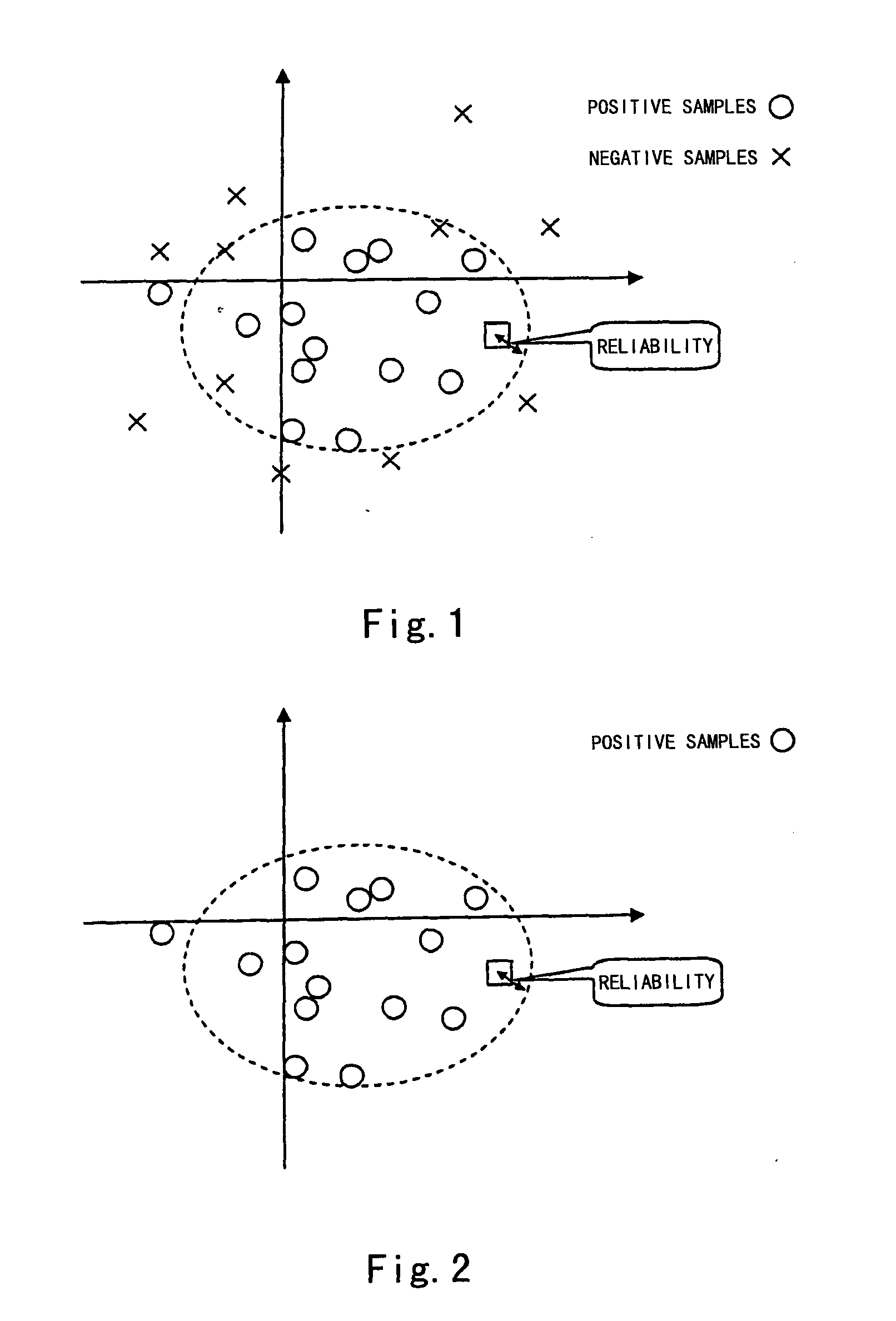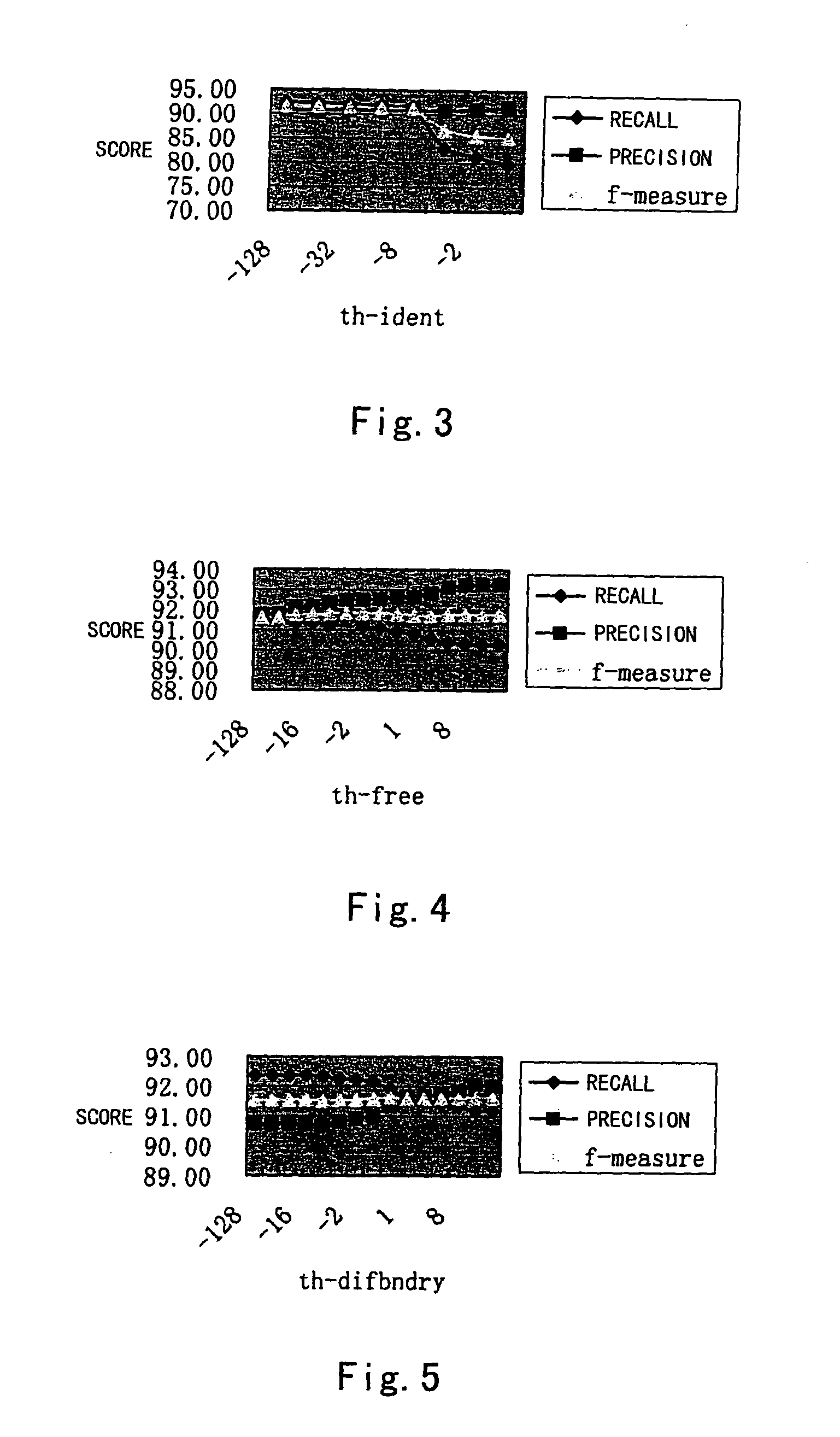Method and apparatus for named entity recognition in natural language
a named entity and named entity technology, applied in the field of language processing methods and systems, can solve the problems of false alarm of the beginning border, method cannot process features in a range of an arbitrary length, and local features in one fixed-size feature window can be used, so as to improve the recognition performance of named entities
- Summary
- Abstract
- Description
- Claims
- Application Information
AI Technical Summary
Benefits of technology
Problems solved by technology
Method used
Image
Examples
Embodiment Construction
[0040]Now, the preferred embodiments of the present invention will be described by referring to the drawings, in which those unnecessary details and functions are omitted in order to prevent them from blurring the understanding of the present invention.
[0041]First of all, the method of globally modeling the named entities is described for better understanding the present invention.
[0042]If one named entity is considered as a whole, then the features of the named entity can be denoted with its left contexts, right contexts and inside features. As shown in the example of Table 4, the features of the target named entity are composed of FL2, FL1, FIn1, FInm, FR1, FR2, as well as the length of the named entity m.
TABLE 4WORDSL2L1In1, In2, . . . , InmR1R2FEATURESFL2FL1FIn1, FIn2, . . . , FInmFR1FR2LEFTINSIDE NAMEDRIGHTCONTEXTSENTITYCONTEXT
[0043]As compared with the (word) local feature selecting method of the example shown in Table 1, the example of Table 1 focuses on the context features ...
PUM
 Login to View More
Login to View More Abstract
Description
Claims
Application Information
 Login to View More
Login to View More - R&D
- Intellectual Property
- Life Sciences
- Materials
- Tech Scout
- Unparalleled Data Quality
- Higher Quality Content
- 60% Fewer Hallucinations
Browse by: Latest US Patents, China's latest patents, Technical Efficacy Thesaurus, Application Domain, Technology Topic, Popular Technical Reports.
© 2025 PatSnap. All rights reserved.Legal|Privacy policy|Modern Slavery Act Transparency Statement|Sitemap|About US| Contact US: help@patsnap.com



